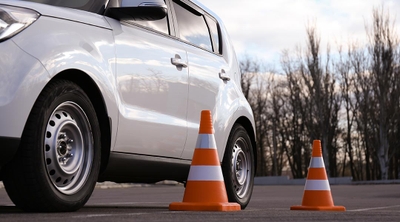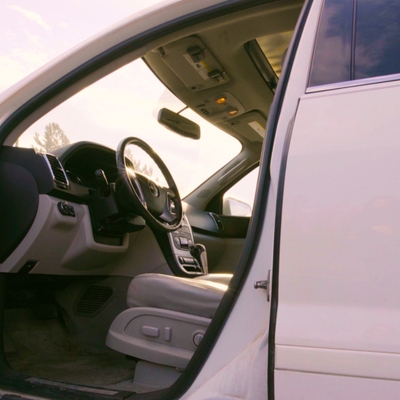How to parallel park a car
3 min read
Learning parallel parking techniques can be challenging thanks to the steps and external factors you must consider. If you’re ready to hone this critical skill to pass the driving test or simply improve your parking, here are the parallel parking steps you can practice.
Parallel parking steps
Parallel parking can seem tricky at first, but with practice, you can master the skill and pass the parallel parking test with confidence.
Find the right parking space
Part of what makes parallel parking formidable is that it’s difficult to judge close distances from inside a car. To avoid the unnecessary hassle of potentially tapping someone’s bumper, set yourself up for success by choosing a parking space that’s the correct size for your vehicle. Ensure it offers ample room for maneuvering your car. At least 24 feet is the recommended parallel parking spot size, but this will vary depending on your vehicle’s size.
Once you’ve selected a space, check your mirrors to make sure your way is clear of pedestrians and potential traffic problems. Use the turn signal to indicate your intention to park.
Position your vehicle
Position your vehicle parallel to the vehicle in front of the desired parking space. Your front windows should be in line with theirs. It’s best practice to keep about two feet between the parked car and your own. Learn more driving etiquette tips.
Check your surroundings again
Once your way is clear, slowly reverse while turning the steering wheel in the direction of the curb. Be careful not to rely only on mirrors, as they have blind spots. Look over your shoulder to see where you are and what’s going on around you.
Back into the parking spot
Once your front passenger door passes the other car’s rear bumper, quickly straighten out the steering wheel while reversing. When you’ve cleared the other car’s bumper, cut the wheel sharply to the left while continuing to reverse. Continue until your vehicle is fully inside the spot, being careful to avoid hitting the curb.
Adjust your vehicle in the spot
At this point, your car should be inside the spot, but it’s likely too close to the vehicle in the rear parking space. Straighten the steering wheel so the tires are parallel to the curb, and then carefully and slowly pull forward. Position yourself in the center of the space to allow you and the cars to your front and back ample room to get out.
If you’re too far from the curb, carefully move forward and back while simultaneously turning the wheel toward the curb, then straightening out again. Before opening the driver’s side door, check for oncoming traffic and cyclists to ensure your way is clear.
Pulling out of the parallel parking space
With your steering wheel straightened, back slowly toward the vehicle behind you. Be vigilant about checking your distance to avoid a collision. Check behind you for traffic and pedestrians.
Use your turn signal to indicate you’ll be pulling into the traveling lane. Recheck your surroundings, as road conditions change quickly.
Now, look back over your left shoulder to keep an eye on traffic and turn your wheel away from the curb. Carefully pull out into the lane once your way is clear of traffic, cyclists, and pedestrians.
Tips for parallel parking
Here are some basic rules of thumb to remember when parallel parking:
- When parallel parking on a hill, make sure to turn your wheels toward the curb if you’re facing downhill, or away from the curb if you’re going uphill, and engage the parking brake to reduce the chance of your car rolling.act rules vary by state) or 30 feet of a marked pedestrian safety zone (such as a bus stop).
- Parking laws vary by state, but you generally can’t park in a crosswalk, intersection, on the sidewalk, on railroad tracks, on a bridge, in a tunnel, or within 50 feet of a stop sign.act rules vary by state) or 30 feet of a marked pedestrian safety zone (such as a bus stop).
- “Double parking” (i.e., parallel parking to the side of another vehicle and thus blocking them in) is prohibited almost everywhere, and specific rules vary by state.
- Ensure your vehicle is not blocking driveways or sidewalk ramps.act rules vary by state) or 30 feet of a marked pedestrian safety zone (such as a bus stop).
- Your vehicle typically can’t be parked within 15 feet of a fire hydrant (exact rules vary by state) or 30 feet of a marked pedestrian safety zone (such as a bus stop).
Check your local driving handbook for further parallel parking regulations, as they can vary by state, and get more tips for driving in the city.






